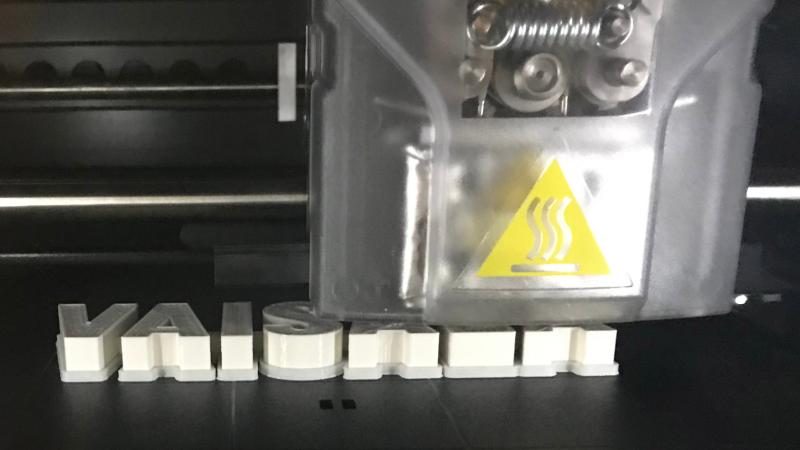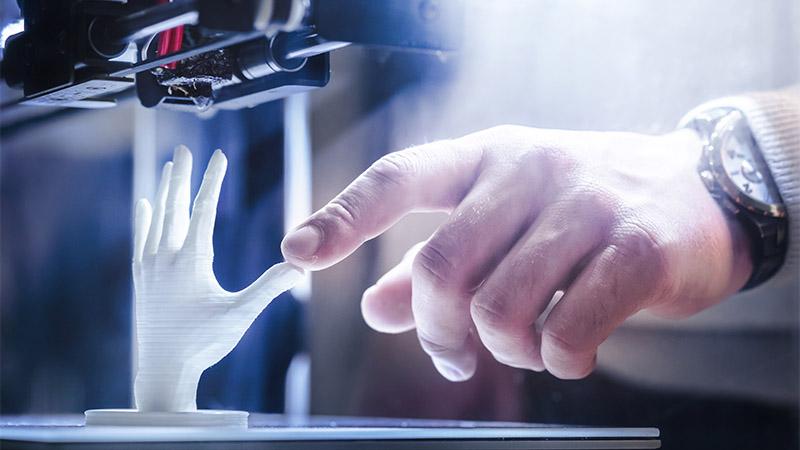Additive Manufacturing & Moisture
Additive manufacturing is rapidly gaining pace as a commercially viable industrial manufacturing technology following the global trends of on-demand production, customization, and the need for savings in time, money, and materials. Whether manufacturing plastic or metal parts, some raw materials such as powders, resin, or filaments are hygroscopic, meaning they absorb moisture from the surrounding ambient air. High moisture levels within the raw material can change its chemical properties and may negatively affect final product quality.
Metal Additive Manufacturing
Additive manufacturing of metal parts is becoming increasingly popular because it can offer new solutions not available with traditional manufacturing techniques. New shapes and techniques that were previously very expensive or even impossible to design using traditional casting and machining methods are now at our fingertips. Products manufactured with a 3D printer can be significantly lighter and just as strong – or even stronger – than their equivalents produced using conventional methods. These features are especially valued in aviation-related applications where tolerances are extremely tight, with each saved gram of metal translating to big savings in the product life-cycle analysis.
Another significant advantage in metal 3D printing is the improved printing speed and production rate. This technology is already challenging traditional manufacturing methods in mass production markets. The ability to reproduce high-quality products is essential to mass production and critical end-use applications such as aerospace, automotive, or medical components.
Moisture plays an important role in many stages of the manufacturing chain so, to ensure consistent quality, it is essential to make sure conditions in facilities throughout the production chain are stable. Manufacturing and storage facilities for equipment and materials should be temperature and humidity controlled to ensure a high-quality product.
High-quality additive manufacturing requires high-quality raw material. The powder materials such as aluminum or titanium alloys used in the selective laser melting (SLM) process are sensitive to ambient humidity. If the powder absorbs too much water from the surrounding air, its chemical characteristics can change dramatically, leading to loss of print quality. All storage conditions, whether inside or outside of the printer, should be carefully monitored to ensure that the raw material meets the manufacturer’s specifications.
With metals, regardless of the 3D printing method used, there is a sintering or melting process that fuses metallic powder to the solid metal part. The sintering must take place in an inert environment with low levels of oxygen and moisture. This can be a harsh environment for any measurement device, but the conditions can also be monitored indirectly through dew point measurement of the inlet and outlet gasses.
Plastic Additive Manufacturing
Moisture is a well-known enemy of plastics. As many polymers are hygroscopic, they will absorb moisture from the surrounding air. As a manufacturer, you do not want your raw material to change its properties – the target is to keep it as consistent as possible. This requires high-quality moisture control throughout the production chain, from filament manufacturing to the 3D printing process itself.
Fused filament fabrication (FFF), also known as fused deposition modeling (FDM), uses a filament of thermoplastic material extruded to the printing platform layer by layer. These filaments are made from a variety of polymers such as ABS (acrylonitrile, butadiene, styrene), PLA (polylactic acid), or PA (polyamide, more commonly known as nylon). All of these polymers have the ability to absorb water, with the amount dependent on the polymer type and the relative humidity of the ambient air. The effects caused by the moisture also depend on the material.
Some materials, like ABS, can withstand relatively high concentrations of moisture without any impact on their material strength, but problems may still emerge during extrusion. When ABS is heated above 200°C the absorbed moisture will evaporate and turn into steam. This causes issues in the print quality since the steam will affect the material flow. Some materials, such as PA (nylon) also suffer from hydrolysis. This means that water molecules damage the polymer chains during extrusion and the material loses its tensile strength.
Conclusion
Whether you are manufacturing your parts out of metal or plastic, you will need to keep a tight control over the conditions in all parts of your facility. To avoid any production quality issues caused by moisture, you need accurate measurements.


Comment
Add new comment